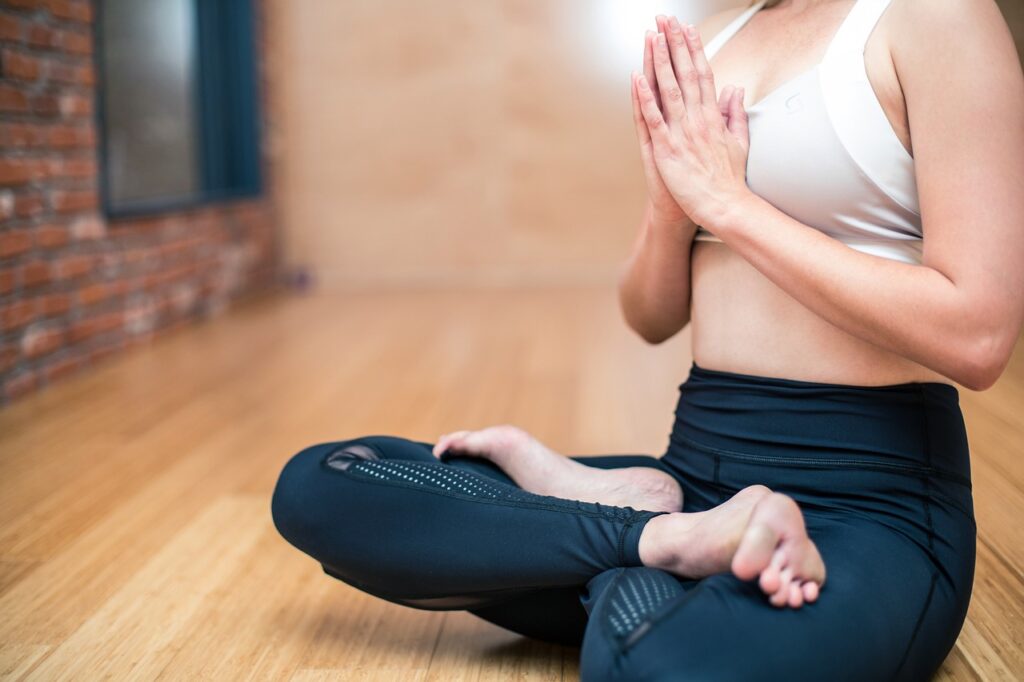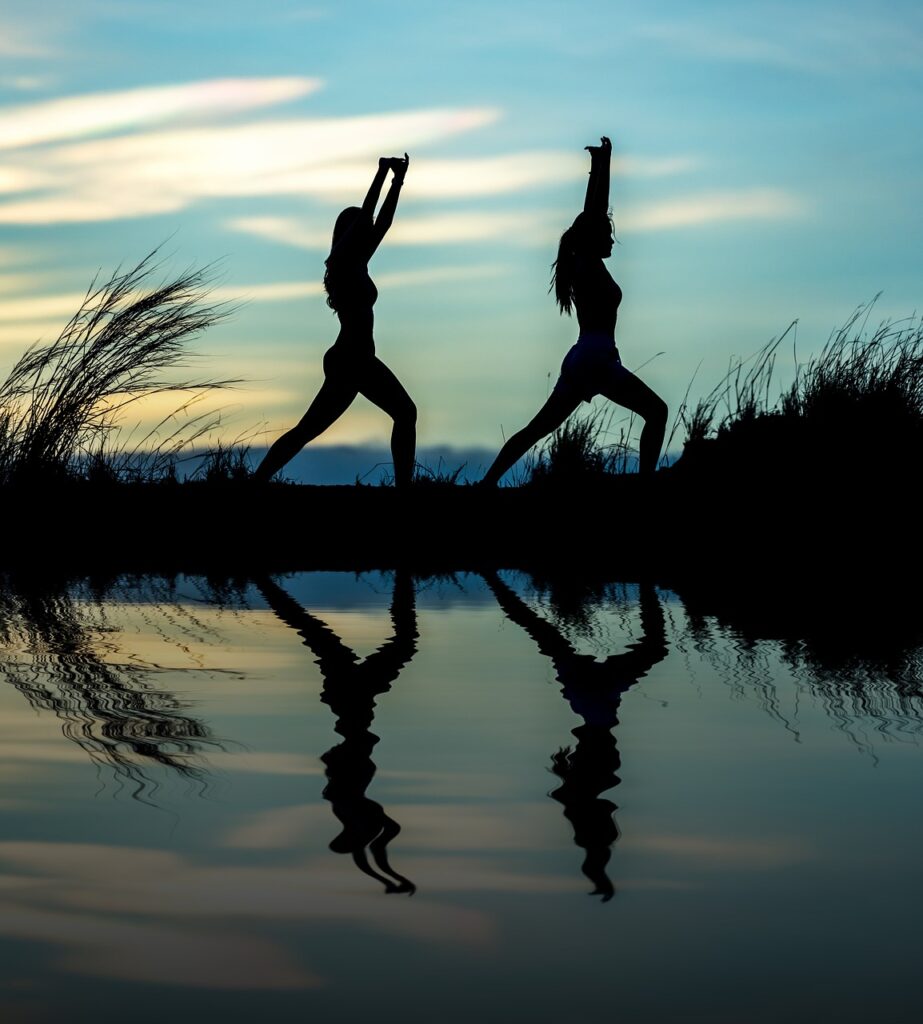If you’re new to the practice of yoga or a seasoned yogi, you might be wondering when is the best time of day to roll out your mat and start your practice. With so many articles and opinions out there, it can be confusing to determine when to fit in your sessions for maximum benefits. In this article, we’ll explore the different times of day to practice yoga and delve into the advantages of each. Whether you’re an early riser or prefer a relaxing evening routine, we’ve got you covered to help you maximize the benefits of your yoga practice.
Morning
Waking up with yoga
Starting your day with a yoga practice can be incredibly beneficial for your mind, body, and overall well-being. Waking up with yoga allows you to gently stretch your body after a night of rest, helping to alleviate any stiffness and tension that may have built up. By incorporating deep breathing and gentle movements, you can gradually transition from a state of relaxation to a state of wakefulness.
Health benefits
Practicing yoga in the morning offers numerous health benefits. It helps to increase blood flow, improve circulation, and boost your metabolism, setting a positive tone for the rest of your day. Yoga also aids in strengthening your muscles and joints, improving flexibility and mobility. Regular morning yoga can support a healthy immune system and promote overall vitality.
Improving focus and productivity
By engaging in a morning yoga practice, you can enhance your focus and productivity throughout the day. Yoga encourages mindfulness and brings awareness to the present moment, allowing you to be fully present and focused on your tasks. The combination of deep breathing, gentle movements, and mental focus can help clear the mind, minimize distractions, and increase your ability to concentrate.
Setting a positive tone for the day
Practicing yoga in the morning helps to set a positive tone for the rest of your day. It allows you to start your day with intention, mindfulness, and gratitude. By taking the time to nurture your body and mind, you are more likely to approach the day with a sense of calm and positivity. This positive mindset can have a ripple effect on your interactions with others and the overall quality of your day.
Mid-Morning
Re-energizing after the initial rush
As the morning progresses and you navigate through your daily tasks, it’s common to experience a dip in energy and focus. This is where a mid-morning yoga practice can come to your rescue. By taking a few minutes to step away from your desk or routine, you can re-energize your body and mind, counteracting any feelings of fatigue or sluggishness.
Enhancing digestion
A mid-morning yoga practice can also aid in digestion. Certain yoga poses, such as gentle twists and forward folds, help to stimulate the digestive system, promoting healthy digestion and alleviating any feelings of bloating or discomfort. By incorporating deep breathing exercises, you actively engage your abdominal muscles, further supporting the digestive process.
Boosting metabolism
By engaging in a mid-morning yoga practice, you can give your metabolism a boost. Yoga increases blood flow, which in turn increases the body’s metabolic rate. By activating and energizing your muscles through various poses, you facilitate the burning of calories and the breakdown of fats. Regular mid-morning yoga can contribute to weight management and overall metabolic health.
Increasing mental clarity
Mid-morning yoga can help increase mental clarity and focus. By taking a break from your immediate tasks and engaging in a mindful movement practice, you create space for your mind to clear and refocus. The combination of deep breathing, gentle stretches, and mindful awareness can improve cognitive function, memory, and overall mental acuity. You’ll find yourself returning to your work with a renewed sense of clarity and concentration.

Noon
A break in the middle of the day
Noon is often a busy time of day, where you may find yourself caught up in meetings, deadlines, or other obligations. Taking a break in the middle of the day to practice yoga can be a valuable way to reset and recharge. By stepping away from your work, you can carve out a few moments to center yourself and find a sense of calm amidst the busyness.
Refreshing the mind and body
A midday yoga practice refreshes both the mind and body. As you move through different poses and engage in deep breathing, you create an opportunity to release any tension or stress that may have accumulated throughout the morning. This helps to reinvigorate your body and bring a renewed sense of mental clarity, allowing you to approach the second half of your day with greater focus and composure.
Relieving stress and tension
The midday period often comes with its fair share of stress and tension. Whether it’s work-related pressures or personal obligations, stress can take a toll on your well-being. Incorporating a yoga practice during this time helps to release physical and mental tension, promoting a sense of relaxation and calm. Gentle stretches, deep breathing, and moments of mindfulness all contribute to reduced stress levels and an improved sense of well-being.
Improving posture and alignment
Throughout the day, it’s easy to fall into poor postural habits, especially when sitting for extended periods. A midday yoga practice can be a great opportunity to realign and correct your posture. By focusing on poses that improve core strength and promote good spinal alignment, you can counteract the negative effects of prolonged sitting, ultimately improving your posture and preventing any associated discomfort or pain.
Afternoon
Post-lunch relaxation
After a fulfilling and nourishing lunch, it’s natural to feel a sense of relaxation. Incorporating yoga into your afternoon routine can deepen this state of relaxation and help you transition smoothly into the rest of your day. By practicing gentle, restorative poses, you provide your body and mind with an opportunity to rest and rejuvenate.
Digestive aid
An afternoon yoga practice can serve as a digestive aid, particularly after a meal. Certain poses, such as gentle twists and inversions, encourage healthy digestion by stimulating blood flow to the abdominal organs. By gently massaging the digestive system, you can alleviate any feelings of bloating, discomfort, or indigestion that may arise after a meal.
Reducing mid-day fatigue
The afternoon slump is a common occurrence for many people. If you find yourself feeling fatigued or lacking in energy during this time, incorporating yoga into your afternoon routine can help combat mid-day fatigue. By engaging in gentle movements and deep breathing exercises, you activate the body’s energy centers, promoting a renewed sense of vitality and warding off slumped shoulders and drowsiness.
Promoting wellness and balance
Regular afternoon yoga practice promotes overall wellness and balance. By dedicating time to caring for your physical and mental well-being, you create a foundation for optimal health. The integration of movement, breath, and mindfulness fosters a sense of inner harmony and balance, allowing you to navigate through the rest of your day with grace and ease.

Evening
Unwinding after a busy day
The evening is a time to unwind, relax, and let go of the stresses of the day. Engaging in an evening yoga practice can help facilitate this process, allowing you to transition from the busyness of your day to a state of calm and relaxation. By focusing on gentle stretches, restorative poses, and deep breathing, you encourage the release of tension and invite a sense of peace into your body and mind.
Relaxing the body and mind
An evening yoga practice is an opportunity to soothe and relax your body and mind. By consciously slowing down your movements, engaging in deep, intentional breaths, and incorporating gentle stretches, you encourage the parasympathetic nervous system to activate. This activates the body’s relaxation response, helping you let go of any physical or mental tension that may have accumulated throughout the day.
Promoting better sleep
Incorporating yoga into your evening routine can greatly improve the quality of your sleep. The combination of gentle movements, deep stretching, and mindfulness helps to calm the nervous system, reducing anxiety and promoting a restful state. By allowing yourself this dedicated time of self-care and relaxation, you create the optimal conditions for a rejuvenating night’s sleep.
Releasing tension and anxiety
The evening can often bring with it feelings of tension and anxiety, especially if you’ve had a busy or stressful day. Engaging in an evening yoga practice allows you to release any pent-up tension or anxiety in a safe and mindful manner. Through a combination of gentle movement and focused breathwork, you can let go of the day’s worries and cultivate a sense of peace and tranquility.
Night
Calming the nervous system
Nighttime yoga practice is a powerful way to calm the nervous system and prepare the body for rest. By transitioning from your day to a mindful and soothing yoga routine, you signal to your body that it’s time to unwind and prepare for sleep. Deep breathing, gentle stretching, and restorative poses activate the relaxation response, helping to reduce the stress hormone levels and promote a sense of calm.
Improving flexibility and mobility
Nighttime yoga sessions can focus on improving flexibility and mobility. By gradually moving through a sequence of gentle stretches and postures, you help to release any residual tension or tightness in the muscles and joints. As your body becomes more relaxed, you can access greater flexibility, leading to improved overall mobility.
Releasing muscle tension
Throughout the day, your body may accumulate muscle tension, particularly if you engage in physically demanding activities or have a sedentary lifestyle. Nighttime yoga practice provides an opportunity to release this tension and allow your muscles to relax fully. Incorporating poses that target specific muscle groups and areas of tightness can help alleviate any discomfort or pain, leaving you feeling more relaxed and at ease.
Preparing for a restful sleep
Nighttime yoga acts as a preparation for a restful sleep. By engaging in a calming and mindful practice, you create an environment conducive to sleep, both physically and mentally. This winding-down routine lets go of the day’s worries, calms the mind, and invites a sense of peace. By practicing yoga before bed, you establish a routine that signals to your body that it’s time to rest and rejuvenate.

After Work
Transitioning from work to personal time
After a long day of work, it’s important to transition from your professional obligations to your personal time. An after-work yoga practice offers a buffer zone between the two, allowing you to release any work-related stress, worries, or tensions. By dedicating time to focus on yourself and your well-being, you create a clear boundary between work and personal life.
Releasing work-related stress
Work-related stress can accumulate throughout the day, leaving you feeling drained and overwhelmed. Engaging in an after-work yoga practice provides an opportunity to release this stress in a healthy and constructive manner. Deep breathing, gentle stretches, and grounding poses help to calm the mind and reset your energy, allowing you to leave the stress of the workday behind and enter your personal time with a clearer state of mind.
Balancing body and mind
An after-work yoga practice helps strike a balance between your physical and mental well-being. By engaging in mindful movements and breathing exercises, you align your body and mind, bringing them into harmony. This integration helps to restore your energy, promote focus and clarity, and enhance your overall sense of balance and well-being.
Promoting self-care and well-being
Incorporating regular after-work yoga practice into your routine prioritizes self-care and well-being. By dedicating time to nurture yourself and engage in activities that promote physical and mental health, you cultivate a deeper sense of self-awareness and self-love. By making yourself a priority, you enhance your overall well-being and set the foundation for a healthier, more fulfilling life.
Before Bed
Relaxation and winding down
Before bed, it’s essential to wind down and allow your body and mind to relax fully. A before-bed yoga routine can help create this transition from the busyness of the day to a state of calm and tranquility. By focusing on gentle stretches, restorative poses, and calming breathwork, you create the optimal conditions for relaxation and prepare your body for a restful night’s sleep.
Improving sleep quality
A before-bed yoga practice can greatly improve the quality of your sleep. Through deliberate deep breathing, gentle movements, and poses that promote relaxation, you signal to your body that it’s time to rest. The focus on mindfulness and easing tension from the body contributes to better sleep quality, allowing you to wake up feeling refreshed and rejuvenated.
Reducing insomnia symptoms
If you struggle with insomnia or have difficulty falling asleep, incorporating a before-bed yoga practice can be particularly beneficial. By engaging in a routine that calms the nervous system and encourages relaxation, you can address the underlying causes of sleeplessness. The combination of gentle stretches, meditative practices, and deep breathing can help reduce anxiety, quiet the mind, and facilitate a more restful sleep.
Promoting mindful awareness
Before bed, the practice of yoga can promote mindful awareness. By intentionally focusing on your breath, body sensations, and mental state, you cultivate a deeper sense of present-moment awareness. This mindful state allows you to let go of any worries or distractions that may be keeping you awake and helps create a sense of inner calm and peace.
Before Exercise
Warming up and preparing the body
Before engaging in any form of exercise, it’s essential to warm up and prepare your body. A pre-exercise yoga session is an excellent way to do this. By incorporating dynamic movements, gentle stretches, and breath-awareness exercises, you increase blood flow to your muscles, warm up your joints, and activate your body’s energy systems in preparation for physical activity.
Enhancing workout performance
A yoga practice before exercise can enhance your overall workout performance. By engaging in a series of poses and movements that target specific muscle groups, you activate and strengthen those areas necessary for your chosen workout. The focus on breath control and mindfulness during yoga also helps to improve mental focus and concentration, setting the stage for optimal performance.
Reducing the risk of injury
Incorporating yoga into your pre-exercise routine can help reduce the risk of injury. By warming up and stretching the muscles and joints, you increase their flexibility and range of motion, making them less prone to strains or tears. Additionally, the increased body awareness and enhanced balance achieved through yoga can help prevent accidents or falls during your workout.
Improving flexibility and strength
Pre-exercise yoga practice can significantly improve your flexibility and strength. Yoga poses target specific muscle groups, lengthening and elongating them, while also building strength and stability. The combination of stretching and strengthening creates a well-rounded foundation for your workout, allowing you to move with greater ease, efficiency, and reduced risk of injury.
Any Time
Finding what works for you
One of the great advantages of yoga is its flexibility. It can be practiced at any time that suits you best. Whether you’re a morning person, a night owl, or somewhere in between, finding a time that aligns with your schedule and personal preferences is crucial. Experiment with different times of the day to discover when you feel most energized, focused, and receptive to your practice.
Matching yoga practice to personal goals
Yoga offers a variety of practices for different needs and goals. By tailoring your yoga practice to your personal goals, whether it’s improving flexibility, reducing stress, or increasing strength, you can make the most of your practice at any time of the day. Research different styles of yoga and choose sequences or poses that align with your specific objectives.
Listening to your body’s needs
Regardless of the time you choose to practice yoga, it’s important to listen to your body’s needs. Pay attention to how you feel physically and mentally, and honor any limitations or sensations that arise during your practice. Allow yourself to modify or adapt poses as necessary, ensuring that your practice remains safe, sustainable, and enjoyable.
Creating a consistent routine
Consistency is key when it comes to reaping the full benefits of yoga. Establishing a consistent routine, regardless of the time of day, creates a habit that becomes ingrained in your daily life. The more consistently you practice, the more you will experience the transformative effects of yoga on your physical and mental well-being. Consider setting aside specific times in your schedule to ensure you prioritize your practice and make it a non-negotiable part of your day.
In conclusion, the best time to practice yoga for maximum benefits ultimately depends on your schedule, personal preference, and individual needs. Each time of day offers unique advantages and supports various aspects of your well-being. Whether you choose to wake up with yoga, re-energize in the mid-morning, take a break at noon, find post-lunch relaxation in the afternoon, unwind in the evening, calm the nervous system at night, transition from work to personal time, wind down before bed, warm up before exercise, or practice anytime that works for you, incorporating yoga into your daily routine can have profound effects on your physical, mental, and emotional health. Let the different times of day guide you in creating a consistent yoga practice that nourishes and supports your overall well-being.
